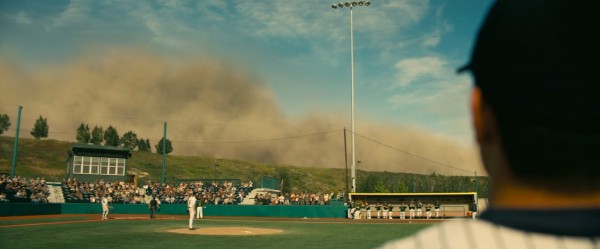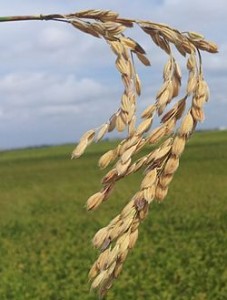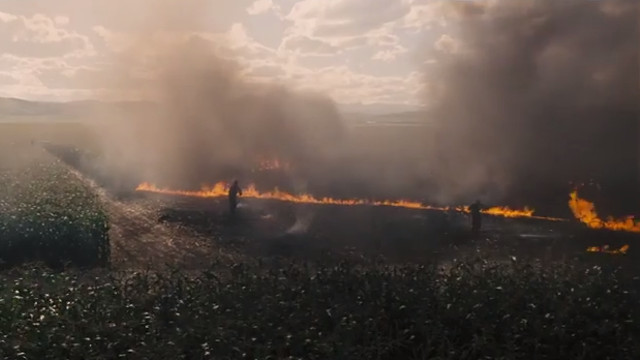December 5, 2014 – In the movie “Interstellar” we witness a growing worldwide agricultural crisis as food staples succumb to crop failures. We see it from the perspective of a Midwestern U.S. farm where only corn remains viable. When the family sits down to dinner, all the food is corn-based. There is nothing else. The farmer and his son watch a neighboring farm going up in flames as its last crop of okra gets burned because it has become infected by blight, a global pandemic impacting all food staples. We also witness gigantic dust storms of “Dirty 30s” magnitude and watch while one envelops a crowd of fans sitting in the stands to watch an afternoon baseball game.
The images are powerful and disturbing. But do they resemble reality?
Is this art imitating life or just a fanciful script brought to the cinematic screen?
Is a planet-wide pandemic blight even possible?
Can a single infective agent destroy all the food crops we grow?
The likelihood of a blight destroying all sources of food is called to question by botanists critiquing the film. That’s because most of the staple crops we grow are genetically dissimilar.
Corn comes from a plant growing in the wilds of North America.
Wheat has its origins in the wild grasses of Eurasia. Rice is another grass.
Okra has African ancestry.
How could all of these plants respond the same way to a worldwide blight?
And if one of these plants were to be completely destroyed, would not the disease itself die out with no more remaining hosts upon which to feed?
On the last point we know that some diseases can infect one host and then in time transition to an entirely different species. When they do the disease agent has an immediate and intense impact if it can survive in the new host long enough to replicate. Ebola virus made the transition across species. Avian and swine flu have as well. But these are more exceptions than the rule.
Of course that doesn’t mean we couldn’t witness a pandemic impacting food supply to a region of the planet dependent on a single staple crop.
Take for example rice. Today much of humanity relies on rice. Rice, unfortunately, is under attack from a devastating fungal disease, called rice blast. The term “blast” truly describes the impact of this infection. Fields look like they have been blasted dry (see image below of infected rice.) Rice blast destroys the equivalent amount of rice each year needed to feed 60 million. And rice blast can potentially infect other members of the grass family – wheat, barley and rye.
Our battle against it has involved using anti-fungal agents, burning fields infected by the fungus, and developing new varieties of rice as quickly as possible to stay one step ahead. The fungus goes by the name Magnaporthe grisea. It evolves almost every two years infecting new rice strains and attacking almost every part of the plant except the root. For rice, then, the science fiction scenario of“Interstellar” appears to parallel real life.
Of course a blight isn’t the only causal agent that could lead to a worldwide food crisis?
World population growth represents the most significant challenge for agriculture putting incredible strain on farmers to meet demand. And now changing climate, extreme weather events, floods, droughts and soil degradation are adding to farmers’ woes. Indeed life may be imitating art. Here are some recent examples.
Throughout Latin America today, the food diet of the population is rapidly changing as soil degradation, periodic flooding and enduring droughts impact farmers’ ability to grow corn and other essential food staples. A recent drought in Central America put two million lives at risk of starvation. Farmers abandoned their homesteads as crops died in the field.
In Argentina, recent climate changes have impacted corn and soy production with the World Bank estimating most recent losses at $2.5 billion U.S.
In the Caribbean extreme climate events have reduced coconut and banana production.
And in the American Midwest and Southwest prolonged drought is drying up the Colorado River basin, the Central Valley of California and the Ogallala Aquifer.
Although the science of biology in “Interstellar” may stretch the truth, the tale told has parallels with some of what humanity is experiencing today. Let’s hope we don’t have to go in search of a new planet to set things right like those humans in the story. Earth is a planet more than worth saving.















